
Baltic Germans are ethnic German inhabitants of the eastern shores of the Baltic Sea, in what today are Estonia and Latvia. Since their resettlement in 1945 after the end of World War II, Baltic Germans have markedly declined as a geographically determined ethnic group in the region.
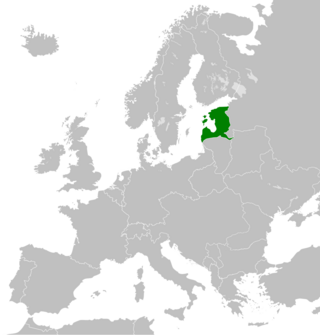
The United Baltic Duchy, or alternatively the Grand Duchy of Livonia, was the name of a short-lived state during World War I that was proclaimed by leaders of the local Baltic German nobility.

The Estonian War of Independence, also known as the Estonian Liberation War, was a defensive campaign of the Estonian Army and its allies, most notably the United Kingdom, against the Soviet Russian westward offensive of 1918–1919 and the 1919 aggression of the pro–German Baltische Landeswehr. The campaign was the struggle of the newly established democratic state of Estonia for independence in the aftermath of World War I. It resulted in a victory for Estonia and was concluded in the 1920 Treaty of Tartu.
The Deutsch-Baltische Gesellschaft is an organization which represents Baltic German refugees expelled from Estonia and Latvia during World War II and its aftermath. It was established in 1950 as the Deutsch-Baltische Landsmannschaft im Bundesgebiet.

The West Russian Volunteer Army or Bermontians was a pro-German military formation in Latvia and Lithuania during the Russian Civil War from November 1918 to December 1919.

Gustav Adolf Joachim Rüdiger Graf von der Goltz was a German army general during the First World War. He commanded the Baltic Sea Division, which successfully intervened in the Finnish Civil War in the spring of 1918. Goltz stayed with his troops in Finland until December 1918 representing German interests, and in practice ruled the country as a military dictator during this period. After the Armistice of 11 November 1918, Goltz commanded the army of the local German-established government of Latvia, which in 1919 was instrumental in the defeat of the Russian Bolsheviks and their local allies in Latvia. The troops commanded by Goltz suffered a defeat against Estonia in 1919 and were eventually unsuccessful in retaining German control over Latvia and Estonia after World War I.
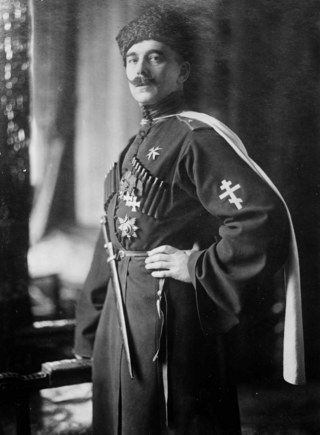
Prince Pavel Rafailovich Bermondt-Avalov or Prince Avalov was a Russian Imperial officer and a Cossack adventurer-warlord. He is best known as the commander of the West Russian Volunteer Army which was active in present-day Latvia and Lithuania in the aftermath of World War I.
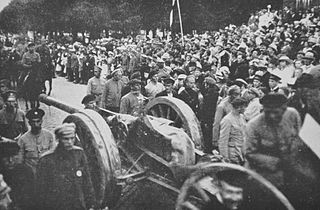
The Latvian War of Independence, sometimes called Latvia's freedom battles or the Latvian War of Liberation, was a series of military conflicts in Latvia between 5 December 1918, after the newly proclaimed Republic of Latvia was invaded by Soviet Russia, and the signing of the Latvian-Soviet Riga Peace Treaty on 11 August 1920.

The House of Lieven is one of the oldest and most aristocratic families of Baltic German and Nordic origin.

The Courland Pocket was an area of the Courland Peninsula where Army Group North of Nazi Germany and the Reichskommissariat Ostland were cut off and surrounded by the Red Army for almost a year, lasting from July 1944 until 10 May 1945.

The Baltic German nobility was a privileged social class in the territories of modern-day Estonia and Latvia. It existed continuously from the Northern Crusades and the medieval foundation of Terra Mariana.

The Freikorps in the Baltic were German paramilitary units that formed after the German Empire's defeat in World War I. Their aim was to prevent the advance of the Soviet Red Army into the Baltic states and preserve a German presence there. The two primary units were the Eiserne Division and the Baltische Landeswehr. After initially defeating the Red Army with the help of Latvian and Estonian forces, the Allied Powers ordered the withdrawal of German soldiers from the Baltics. The German Freikorps forces then attempted to seize control of Latvia with the assistance of the local ethnic German population. They captured Riga but were driven back. Following intervention by the Allies on 3 July 1919, the Freikorps in the Baltic retreated to Germany.
The Alpenkorps was a provisional mountain formation of division size formed by the Imperial German Army during World War I. It was considered by the Allies to be one of the best in the German Army.
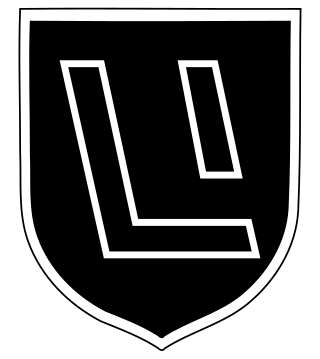
The 15th Waffen Grenadier Division of the SS , originally called the Latvian SS-Volunteer Division was an infantry division of the Waffen-SS during World War II. It was formed in February 1943, and together with its sister unit, the 19th Waffen Grenadier Division of the SS formed the Latvian Legion.
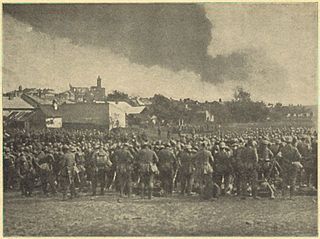
The 4th Landwehr Division was an infantry division of the Imperial German Army during World War I. It was formed on mobilization of the German Army in August 1914 under the "Higher Landwehr Commander 4". The Landwehr was the third category of the German Army, after the regular Army and the reserves. Thus Landwehr divisions were made up of older soldiers who had passed from the reserves, and were intended primarily for occupation and security duties rather than heavy combat. The division was primarily raised in the Prussian provinces of Upper and Lower Silesia. It was disbanded in 1919 during the demobilization of the German Army after World War I.
The Battle of Cēsis, fought near Cēsis (Wenden) in June 1919, was a decisive battle in the Estonian War of Independence and the Latvian War of Independence. After heavy fighting an Estonian force moving from the north, supplemented by Latvian units, repelled Baltic German attacks and went on full counter-attack.
The 2nd Bavarian Landwehr Division was a unit of the Bavarian Army, part of the Imperial German Army, in World War I. The division was formed on December 31, 1916. It was disbanded in 1919 during the demobilization of the German Army after World War I. It was composed primarily of troops of the Landwehr.
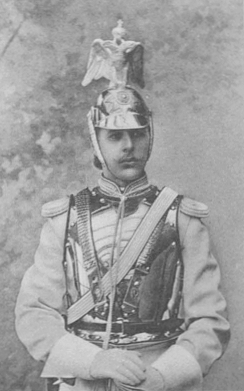
Anatol Leonid Fürst von Lieven was a Russian military commander from the Baltic German princely house of Lieven. During the Russian Civil War he commanded a White force in Latvia known after him as the Liventsy.
Georg Baron von Manteuffel-Szoege was a German politician.

The Eiserne Division was the name of an anti-communist military formation made up of German volunteers that took part in the Latvian War of Independence in the Baltic States in 1919. It was the best-known Freikorps formation in the Baltic States. The unit was deployed against Soviet Russia-backed Soviet Latvia, and later fought against the army of the Republic of Latvia after a defection to Russian monarchist command. The division, which at times numbered up to 16,000 men, was disbanded at the beginning of 1920 due to mutiny.

















